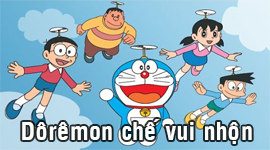Skills
Review 2 (Units 4- 5- 6)
Skills
Reading
1. Read the text and choose the correct answer A, B, C, or D for the questions.
Đọc đoạn văn và chọn đáp án đúng.
50 years back in time and even before that, in the absence of the Internet and various hi-tech toys, the entertainment world used to be so different from what it is nowadays. Running wild on the pastures, and bathing in the river, children back then saw nature as their playground and were curious to explore and enjoy it in their own creative ways. They found small objects around them to make toys. Boys used branches as swords for mock battles while girls used them as chopsticks to play imaginary restaurants. In this way, children enjoyed themselves on the way to school, during school breaks, and even when they were herding buffaloes. At that time, tug of war, hide and seek, and skipping were popular games. Some have even made it through to today.
The fact that those popular games were meant to be played in groups made it easier and faster for children to make friends. Moreover, people rarely moved away from their hometown, so childhood bonds were even stronger as children grew up playing together all their life.
Dịch:
Vào thời điểm này 50 năm trước và thậm chí là xưa hơn nữa, trong sự thiếu vắng của Internet và đủ loại đồ chơi công nghệ cao, thế giới giải trí khác biệt so với những gì ngày nay. Chạy lông nhông trên những đồng cỏ và tắm sông, trẻ con ngày ấy xem thiên nhiên là sân chơi của chúng và tò mò khám phá cũng như hưởng thụ thiên nhiên theo cách sáng tạo của chính chúng. Chúng tìm những đồ vật nhỏ xung quanh chúng để làm đồ chơi. Bọn con trai dùng cành cây làm gươm để chơi đánh trận giả trong khi tụi con gái cành cây làm đũa để chơi đồ hàng. Bằng cách này, trẻ con thư giãn bản thân chúng trên đường đến trường, suốt thời gian ra chơi và thậm chí khi chúng chăn trâu. Lúc đó, kéo quân, trốn tìm, nhảy dầy là những trò chơi phổ biến. Một số chúng thậm chí tồn tại đến hôm nay.
Sự thật là những trò chơi phổ biến đó có ý nghĩa chơi theo nhóm làm cho bọn trẻ kết bạn nhanh hơn và dễ dàng hơn. Hơn nữa, người ta hiếm khi rời khỏi nơi họ sông, vì vậy môi ràng buộc thơ ấu thậm chí mạnh mẽ hơn thể như trẻ con lớn lên chơi cùng nhau suốt cuộc đời chúng.
1. Children in the past saw nature as
A. an entertainment
B. an unknown environment
C. a workshop
D. beautiful scenery
2. Which of the following things was NOT likely to be used as a toy by children in the past?
A. sticks
B. small stones
C. dry leaves
D. beautiful sivler spoons
3. Which of the following statements is NOT true about children’s games in the past?
A. Tug of war was familiar to most children
B. some games are still played now
C. Children could play them while they were herding buffaloes
D. No game in the past is known to children nowadays.
4. The word “explore” could be replaced by
A. find
B. discover
C. destroy
D. play
5. The word “them” refers to
A. children
B. boys
C. branches
D. toys
Speaking
2. These are some ideas taken from Reading. Do you agree or disagree with them? Support your answers with ideas from the passage or of your own.
Những ý sau được lấy ra từ bài đọc. Bạn đồng ý hay không đồng ý? Đưa ra các căn cứ để bao vệ ý tưởng của mình.
- Children back then saw nature as their playground.
- Playing games in groups made it easier and faster for children to make friends.
- Childhood bonds were stronger as they grew up playing together.
3. Listen to Nguyen's presentation about a natural wonder in Viet Nam and decide if the sentences are true (T) or false (F).
Nghe bài thuyết trình của Nguyên về kì quan tự nhiên ở Việt Nam và quyết định xem câu nào đúng(T) câu nào sai (F)
Click tại đây để nghe:
1. People visit Moc Chau in spring only. → F
2. The beauty of Moc Chau is like nowhere else in Viet Nam. →T
3. Visitors eat the local dishes because they love the way they smell. → F
4. Visitors to a small village are likely to be treated with home-made corn wine. → T
5. The locals’hospitality is one attraction for tourists. → T
6. It’s difficult to reach Moc Chau because of its remote and high elevation. → F
Dịch:
1. Người ta chỉ đến thăm Mộc Châu vào mùa xuân.
2. Vẻ đẹp của Mộc Châu không giống nơi nào khác ở Việt Nam.
3. Khách du lịch ăn thức ăn địa phương bởi vì họ thích cách thưởng thức thức ăn.
4. Du khách đến 1 ngôi làng nhỏ có thể được đãi món rượu bắp nhà làm.
5. Sự hiếu khách của người địa phương là 1 điểm thu hút khách du lịch.
6. Thật là khó khăn để đến Mộc Châu bới vì nó là vùng cao và xa.
4. Based on the notes below, write a short paragraph about a traditional home in the countryside of Viet Nam in the past. In your writing, you can include all or some of the ideas below.
Dựa vào các chú ý sau đây để viết 1 đoạn văn ngắn về ngôi nhà truyền thống ở vùng quê Việt Nam ngày xưa. Bạn có thể sử dụng các gợi ý sau
- accommodation: three-room and two-wing house
- well-off: made of wood, bricks, and tiles + poorer: made of bamboo, earth, and straw
- family structure: extended
- man: dominant figure/head of the household
- food and drinks: mainly home-grown and home-made
- marriages: arranged by parents
- You can start your writing with:
- A traditional home in Viet Nam
Gợi ý:
A traditional home in Viet Nam has two - wing and three - room. The house are usually made of wood, bricks and tiles if owner is well - off. And the poorer build their house with bamboo, earth and straw. Most of them live in extended family where man is head of the household. Food and drinks are mainly home - grown and home - made so they are all very healthy. Their marriges are usually arranged by parents.
Bài tập
- Bài 1. Read the text and choose the correct answer A, B, C, or D for the questions.
- Bài 2. These are some ideas taken from Reading. Do you agree or disagree with them? Support your answers with ideas from the passage or of your own.
- Bài 3. Listen to Nguyen's presentation about a natural wonder in Viet Nam and decide if the sentences are true (T) or false (F).
- Bài 4. Based on the notes below, write a short paragraph about a traditional home in the countryside of Viet Nam in the past. In your writing, you can include all or some of the ideas below.




